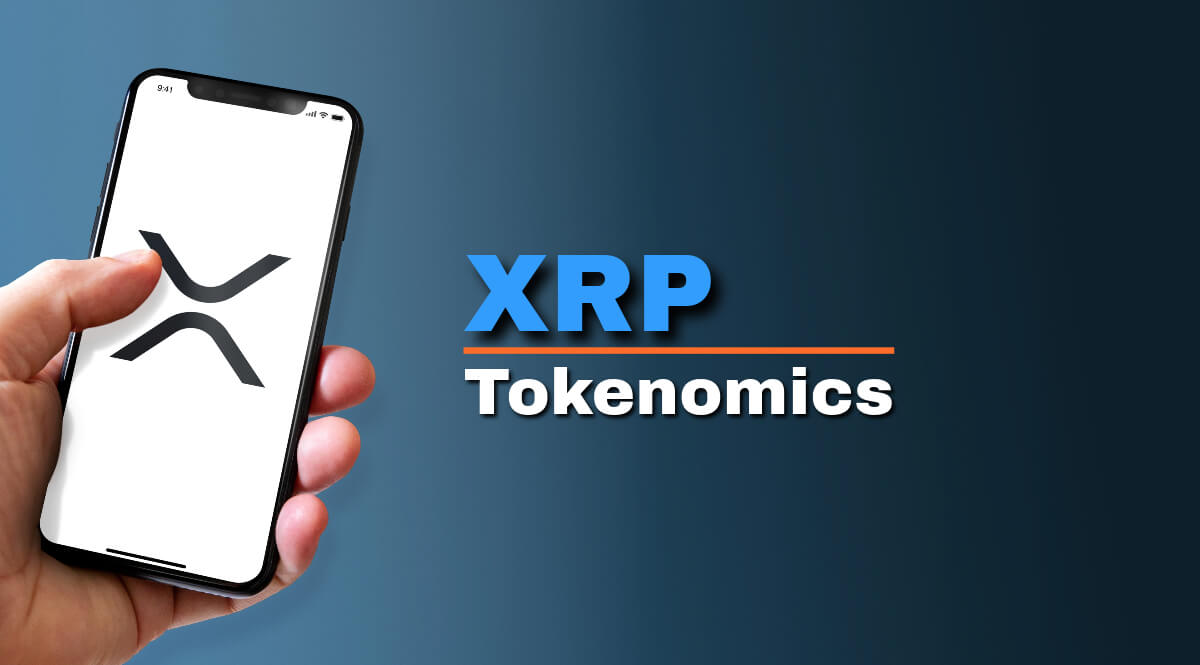XRP tokenomics – definition and overview by an expert
Key Takeaways:
XRP is a cryptocurrency with a unique tokenomics model, aiming to improve cross-border transactions and compete with Bitcoin.
Ripple Labs, RippleNet, and XRP are interconnected but serve different purposes within the ecosystem.
It has a deflationary nature with a decreasing total supply, and it uses a burning mechanism to confirm transactions.
The future of XRP is uncertain, largely dependent on the outcome of its legal battle with the SEC.
Are you interested in learning more about XRP tokenomics as a huge cryptocurrency and blockchain technology fan, trader and collector? Few cryptocurrencies can boast a track record as extensive as this particular token.
XRP cryptocurrency has consistently ranked in the top ten of the largest crypto projects. It even briefly claimed the title of the second-largest cryptocurrency by market capitalization in 2017 and 2018.
This success is partly due to its unique features, including its initial allocation and escrow accounts. Despite these achievements, its journey has been marked by numerous controversies, leaving investors puzzled.
Remember, the project’s deflationary nature has made it more complex, leading to ongoing debates and uncertainties.
So, what was the fuzz of this XRP tokenomics? Let’s find out more about it, shall we?
What does XRP tokenomics represent?
XRP aimed to replace Bitcoin and offer a quicker, cheaper, and clearer method to transfer transactions between financial databases.
Its primary focus is improving the sluggish and expensive cross-border transactions common in traditional finance. Launched in 2012, Ripple is a digital currency that utilizes the XRP Ledger for transactions and network events. Bitcoin inspired it.
Unlike Bitcoin’s Proof-of-Work and mining, this token employs the Federated Byzantine Agreement (FBA) model for achieving consensus.
It is different in terms of network participation. Only a trusted group of nodes called the Unique Node List (UNL), can be validators, with a total of 150 nodes.
Functioning as a digital asset
XRP, functioning as a digital asset, offers crypto enthusiasts an investment opportunity. This digital asset is accessible on multiple cryptocurrency exchanges like:
Binance
Kraken
FTX
Bitstamp
Bitfinex.
For that reason, it facilitated trading against fiat currencies and other cryptocurrencies.
Notably, its transaction fees are relatively low compared to many other coins.
Also, with its limited coins, it is still a popular investment option. Nexo and YouHolder offer XRP savings accounts where you can earn interest on your token’s holdings.
The difference between the XRP token and the Ripple
To clarify, it’s essential to differentiate between Ripple Labs, RippleNet, and XRP and consider factors like:
Transaction costs
Circulating supply
Long-term sustainability.
Ripple Labs is a for-profit company that owns both RippleNet and XRP.
On the other hand, RippleNet represents a decentralized financial ecosystem that integrates numerous digital payment and financial service providers, leveraging Ripple’s distributed ledger technology. This setup is designed to reduce transaction costs, enhancing efficiency.
A native coin of the network
As the native coin of the network, this token plays a pivotal role in this ecosystem. It is utilized by providers and enterprises within RippleNet, contributing to its long-term sustainability.
The coin’s circulating supply is a crucial aspect of its value and overall functionality within the Ripple ecosystem.
XRP Tokenomics Explained by a professional
XRP token follows a different approach from Bitcoin (BTC), which has a capped supply of 21 million coins. At the start, 100 billion tokens were made, making it a pre-mined native cryptocurrency with many tokens in circulation.
This strategy, overseen by co-founders Jed McCaleb and Chris Larsen, led to its unique distribution model.
The XRP ledger has 55 smart contracts with 1 billion XRP tokens each. It releases 1 billion tokens into the market every month for 55 months.
This incremental increase in the circulating supply contrasts with Bitcoin’s fixed supply.
What are the concerns here?
However, concerns about decentralization arise as just the top 100 wallets control over 60% of its total supply.
Ripple, the company behind XRP, owns 6.5 billion XRP. The total circulating supply of XRP is approximately 42 billion tokens, a significant amount.
The total supply of it decreases over time.
XRP also shows deflationary characteristics as its total supply decreases over time. By August 2022, the total supply had reduced to 99,989,535,142 XRP.
The reduction happens when a small fee is removed from each transaction in XRP’s open-source protocol.
This burning mechanism has various use cases and is a key aspect of it’s protocol. It solves regulatory concerns and confirms transactions within the network, addressing issues raised by the Securities and Exchange Commission.
Who uses XRP nowadays?
RippleNet combines Ripple’s XRP tokenomics and smart contracts for streamlined connectivity with hundreds of global financial institutions via a single API.
This boosts cross-border payments in terms of speed, cost-effectiveness, and reliability.
Notable Partnerships
Ripple used to work with Moneygram, a US remittance company, for cross-border transactions. However, their partnership ended in March 2021.
On-Demand Liquidity
RippleNet uses its cryptocurrency to provide liquidity for cross-border payments, removing the need for pre-funded accounts.
This service benefits multinational corporations like Bank of America, Santander, American Express, SBI Remit, and Banco Rendimento.
Interledger Protocol
Banks and financial institutions can use Ripple’s services without using XRP. They can transfer funds between cryptocurrency ecosystems and bank ledgers using the Interledger Protocol, connected to the XRP Ledger.
Bottom line: What is the future of this token?
In short, the future of this token depends on the result of its legal fight with the SEC. It is an old cryptocurrency used by big financial institutions on RippleNet. Legal issues have affected its price, and their resolution will determine where this token is headed.
The post XRP tokenomics – definition and overview by an expert appeared first on FinanceBrokerage.






























